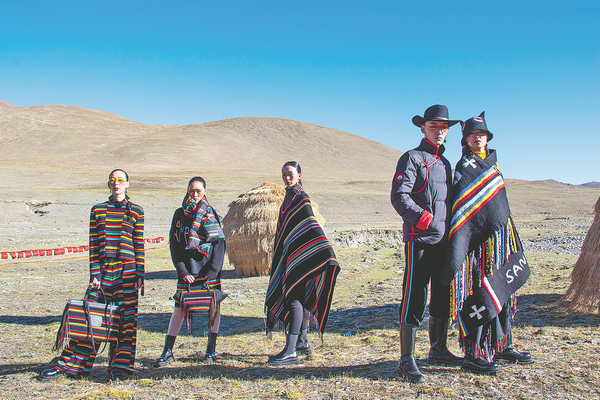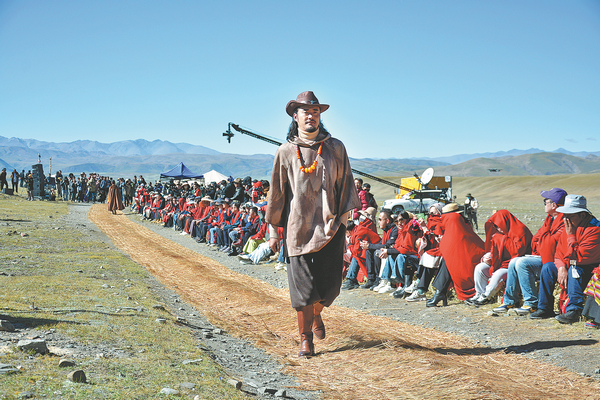

Under clear blue skies and with the snowcapped Nechen Kangsang Mountain as a backdrop, a fashion show was held at Mayor village at an altitude of 4,800 meters. The models presented a heart-stopping visual feast for spectators.
The show, featuring the traditional clothing of Shigatse city in the Tibet autonomous region, was held in Gyalze county in mid-September, and showcased the alluring combination of traditional Tibetan clothing and modern design.
Locally produced woolen cloth, or nambu, is part of the region's long and deep traditional costume culture. Nambu is woven out of wool and cashmere, and is widely used as a material in Tibetan clothing, including robes, hats, boots and sheets.
It not only reflects the folk customs of Tibet, but also demonstrates the harmonious coexistence of all ethnic groups in the region with nature, Guo Xiuling, founder of Chinese brand Sand River, was quoted as saying by Tibet Daily.
As the planner of the show, Guo says that under the guidance and matchmaking of the Aid Tibet cadres from Shanghai, Sand River's designs have been integrated with Tibetan woolen cloth craftsmanship, creating a visually impactful collision between traditional woolen clothing and modern fashion design.
By introducing Shanghai's traditional craft enterprises and industry leaders to Shigatse, Aid Tibet has been supporting the production of traditional woolen textile products in recent years, helping local craftsmen improve processing, design and quality to make it more attractive to consumers, brands and markets.

A range of products with Tibetan elements in line with public aesthetics have been produced, and they have been working to transform this unique advantage into an economic benefit. Sand River acts as a bridge between grassroots material producers and market expansion.
All the clothing displayed in the fashion show is made manually by women from the villages of Gyalze county, and the added value of Tibetan clothing has been upgraded by incorporating modern designs.
Guo says that her company uses natural, sustainable raw materials like cashmere and yak hair, which are completely biodegradable. It incorporates traditional Tibetan culture into the production process, taking inspiration from elements like Tibetan opera, and intangible cultural heritage handcrafting techniques have been adopted during production.